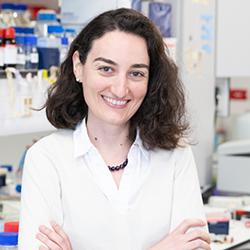An understanding of the diversity of neural progenitors and flexibility in their fate choices - lineage plasticity - is crucial for understanding how complex organs like the brain are generated or undergo repair. The neonatal mouse cerebellum has emerged as a powerful model system to uncover regenerative responses and study progenitor plasticity due to its high regenerative potential. The cerebellum is a folded hindbrain structure that is important for skilled motor movements and higher order cognitive functions. Its protracted development makes the neonatal cerebellum susceptible to injury around birth. Indeed, cerebellar injury and hypoplasia is the second leading risk factor for autism spectrum disorders. Therefore, it is critical to understand the regenerative potential of the neonatal cerebellum and identify factors that could enhance repair.
We have previously shown that the cerebellum can recover from the loss of at least two types of neurons via distinct regenerative mechanisms (Wojcinski, Nature Neuroscience, 2017; Bayin, eLife, 2018; Bayin, Science Advances, 2021). In one case, when the rhombic lip-derived granule cell progenitors are ablated, a subpopulation of the ventricular zone-derived nestin-expressing progenitors (NEPs) that normally generate Bergmann glia and astrocytes undergoes adaptive reprograming and replenishes some of the lost granule cell progenitors. However, the full repertoire of molecular and cellular mechanisms that regulate neonatal cerebellar development and adaptive reprograming of NEPs upon injury remain to be studied. One of our labs aim is to identify the cellular and molecular mechanisms that enable regeneration in the neonates. Our research will have implications for neonatal health and our findings will identify novel therapeutics to overcome impediments during cerebellar development.


